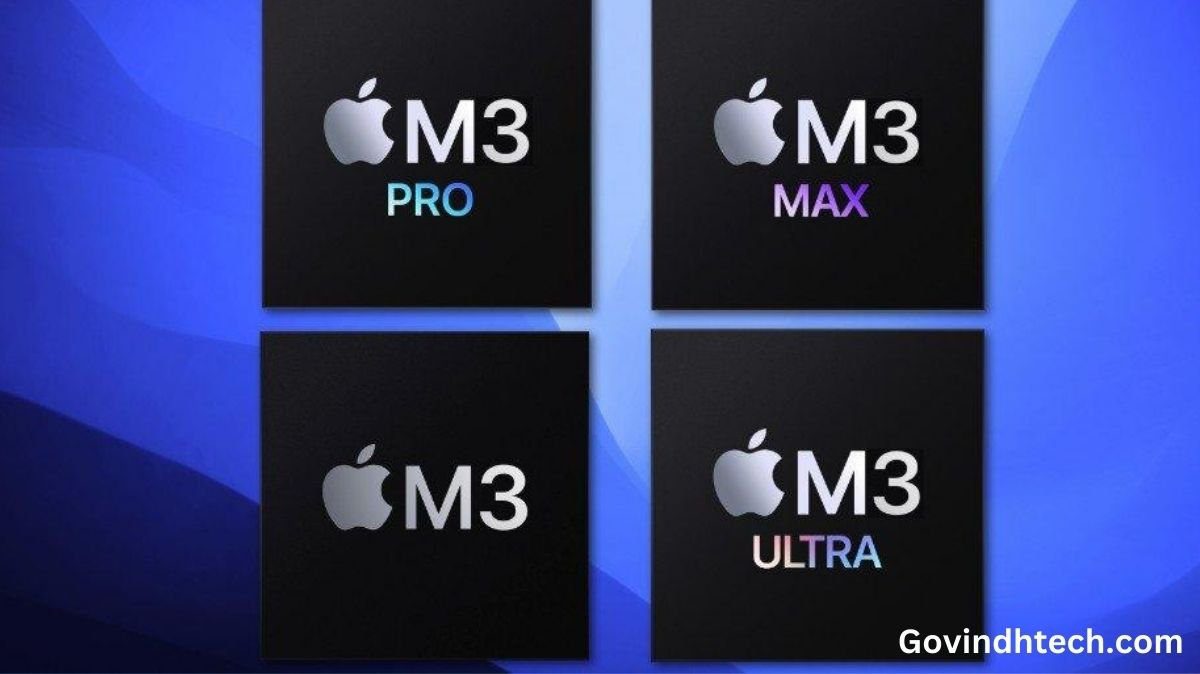The more potent M3 Pro and M3 Max are expected to launch in the middle of next year. Apple is building a range of M3 chipsets based on TSMC’s next-generation 3nm design. We have already discussed their specifications as well as the fact that the M3 Max is being tested in two different configurations, one of which has a 16-core CPU and a 40-core GPU. Even the M3 Max will eventually be eclipsed by the M3 Ultra, which is rumored to have a considerable increase in CPU and GPU cores above the M2 Ultra.
According to reports, two M3 Ultra versions are being tested, with the top configuration potentially having an 80-core GPU.

The M3 Ultra’s potential combinations were made known to us by Mark Gurman’s ‘Power On’ newsletter. As most of you are aware, Apple’s ‘UltraFusion’ technology was used to create the M2 Ultra, fusing two M2 Max chipsets into a single die. The M3 Ultra will probably be produced utilizing two M3 Max SoCs using the same methodology. The M2 Ultra currently has a 24-core CPU, 76-core GPU, and 32-core Neural Engine as its top three specifications.
Gurman thinks that the M3 Ultra should have a 32-core CPU with 24 performance and 8 efficiency cores, even in the base model. Also included in this specific version should be a 64-core GPU. Strangely, the more powerful M3 Ultra version advertises the same number of CPU cores while increasing the number of GPU cores to 80. The most powerful version might have even more CPU cores than his present estimate because, of course, the real specifications could vary dramatically during the production process.
Although Gurman is unsure if the same silicon will drive a future Mac Pro, the M3 Ultra might be found in an improved Mac Studio. Given that the tower Mac Pro’s specs are identical to those of the current-generation Mac Studio, which costs $3,000 less, we may see the business discontinuing the larger workstation or releasing a smaller version in the future. According to the Bloomberg reporter, the first model in Apple’s M3 portfolio should go on sale in October, with the remaining models following the following year.
The initial M3 Macs, which will use Taiwan Semiconductor Manufacturing Co.’s 3-nanometer manufacturing process, should be released in October. I don’t think the M3 Pro and M3 Max Macs will be available until 2024 given the M1 and M2 release cycles in the past. And it’s conceivable that an M3 Ultra chip won’t be available until the very end of that year.
Gurman discussed the features of the M3, M3 Pro, and M3 Max in a previous issue of the ‘Power On’ newsletter, so we suggest reading that article to decide whether you should upgrade now or wait until the future.


[…] correct information about impending Intel products, Intel aims to expand the L2 capacity of its next CPUs, code-named Arrow Lake, to 3 MB per core. If the data is correct, Arrow Lake CPUs will perform […]
[…] X Series uses iCUE LINK to simplify creating a bespoke cooling loop with the new ELITE array of CPU and GPU water blocks, pump/reservoir combo, and […]
[…] more powerful variants, which will come with the monikers ‘Pro,’ ‘Max,’ and ‘Ultra,’ similar to what Apple has done with past iterations of the device. Keep in mind that while the M5 […]
[…] if the conditions are not ideal for the CPU, the bulk of the blame for this problem lies with AMD. This is despite the fact that the conditions […]
[…] As can be seen in the image that was published to Webi and included in this article, you have access to a number of different clock speeds from which to make your option. Presets are not a horrible thing, especially for those who are not well-versed in the concept of overclocking; however, I am unsure as to whether or not you will get an option for manually overclocking the CPU. […]
[…] as vSAN ESA ReadyNodes. Every vSAN ESA ReadyNode is ideally configured with the necessary amount of CPU, memory, network IO, and storage NVMe devices for vSAN ESA or OSA. Dell has more than 250 […]
[…] The Evolution: M3 Ultra’s Next-Gen CPU & GPU Cores Apple M2 Ultra Benchmark […]
[…] increase over Graviton2. However, you can choose a less expensive instance type with no GPU and a lower CPU count, such the T3 family, if your application does not require great CPU […]